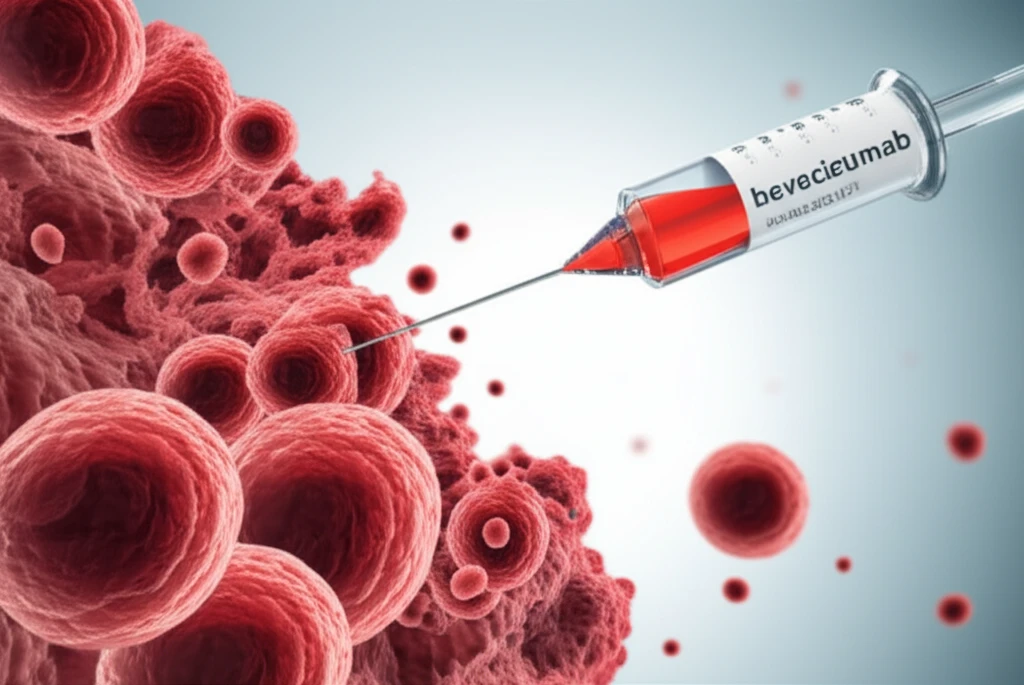
Third-Line Lung Cancer Treatment: Is Chemotherapy Plus Bevacizumab the Answer?
"A new study explores the effectiveness of adding bevacizumab to chemotherapy for advanced non-small cell lung cancer patients who have exhausted other options."
Lung cancer is a leading cause of cancer-related deaths worldwide, with non-small cell lung cancer (NSCLC) accounting for the majority of cases. While first-line treatments like platinum-based chemotherapy and targeted therapies have improved outcomes, many patients eventually experience disease progression. This necessitates the exploration of effective second- and third-line treatment options.
Bevacizumab, a monoclonal antibody that targets vascular endothelial growth factor (VEGF), has shown promise in combination with chemotherapy as a first-line treatment for NSCLC. However, its effectiveness as a salvage treatment, specifically in the third-line setting, has remained unclear.
A recent study published in Oncology Letters sought to compare the efficacy and safety of chemotherapy plus bevacizumab versus chemotherapy alone as a third-line (or continuing) treatment for patients with advanced NSCLC. This article breaks down the study's findings and what they might mean for patients and their treatment plans.
Chemotherapy Plus Bevacizumab: Does It Improve Outcomes?

The study, a retrospective analysis, examined data from 76 patients with stage IV NSCLC who had previously failed at least two prior systemic regimens. Half of the participants received chemotherapy plus bevacizumab, while the other half received chemotherapy alone. Researchers then matched 38 patients from each group based on various factors like age, sex, smoking history, and EGFR mutation status to ensure a fair comparison. The types of chemotherapy regimens used included gemcitabine, pemetrexed, paclitaxel, and docetaxel.
- Improved Response Rates: Patients receiving the combination therapy experienced a significantly higher objective response rate (ORR) of 23.7% compared to only 5.3% in the chemotherapy-alone group. This means that the tumors of more patients in the combination group shrank or disappeared.
- Better Disease Control: The disease control rate (DCR), which includes patients with complete response, partial response, or stable disease, was also significantly higher in the chemotherapy-bevacizumab group (65.8%) compared to the chemotherapy-alone group (31.6%).
- Prolonged Progression-Free Survival: Patients receiving the combination therapy had a longer progression-free survival (PFS) of 3.9 months, compared to 2.2 months for those receiving chemotherapy alone. This indicates that the combination therapy helped delay the progression of the disease.
- Manageable Side Effects: The incidence of severe adverse events (grade 3 or higher) was low and similar in both groups, suggesting that the combination therapy was generally well-tolerated.
What This Means for Lung Cancer Patients
While the study has limitations, it suggests that adding bevacizumab to chemotherapy may be a valuable option for NSCLC patients who have progressed on prior treatments and have not previously received bevacizumab. The combination appears to offer improved response rates, better disease control, and prolonged progression-free survival, with manageable side effects. However, it is important to note that this study was retrospective and involved a relatively small number of patients. More prospective, large-scale studies are needed to confirm these findings and further define the optimal use of chemotherapy-bevacizumab in the third-line setting. As always, discuss treatment options with your oncologist to determine the best course of action for your individual circumstances.
